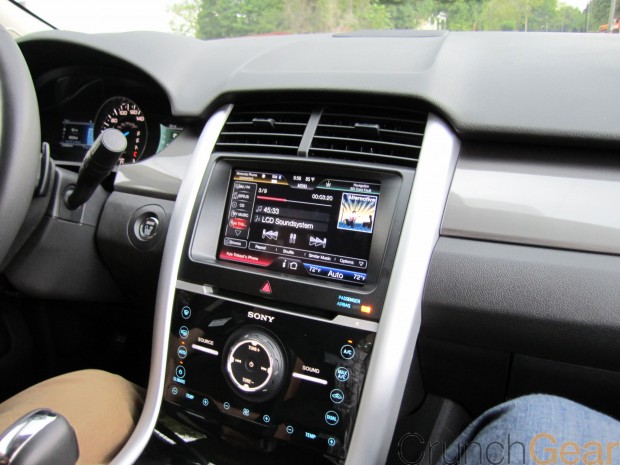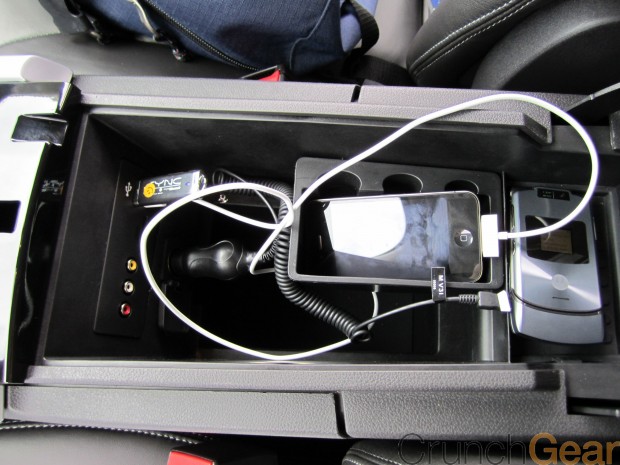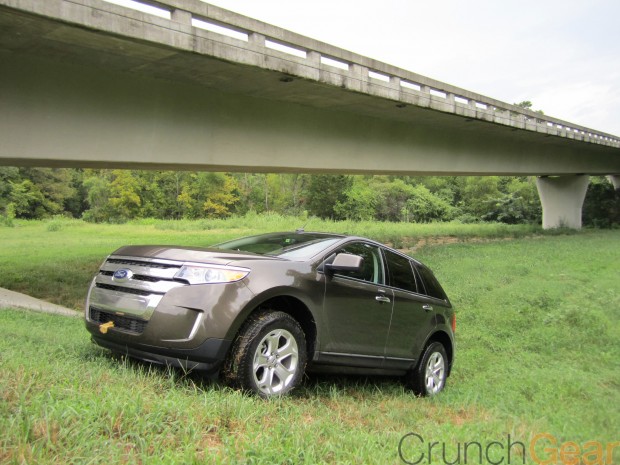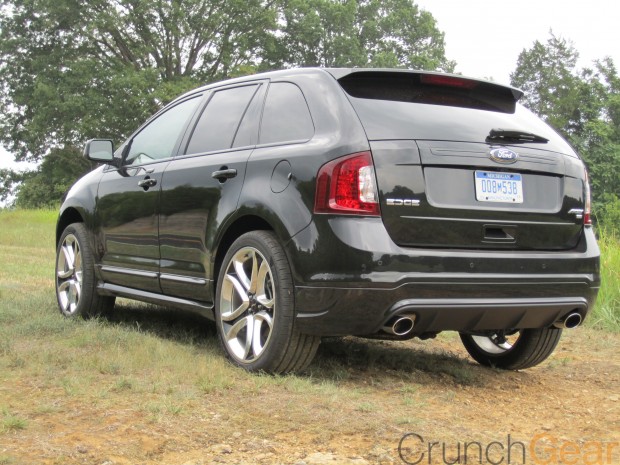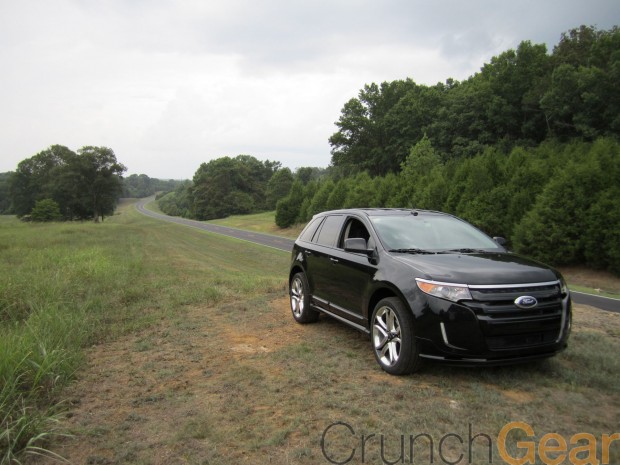
Edging down Natchez Trace parkway, in the mountains just southwest of Nashville, a small convoy of journalists deftly put the new 2011 Ford Edge through its paces. When making passes along the route one couldn’t help but notice smiles gleaming on the faces of the other journos.
We tested both the 22-inch rolling Edge Sport and the $10K cheaper Edge SEL. This vehicle is the first from Ford to include the new MyFord Touch system – a fully interactive suite of tools for your driving experience – and it was an experience. Remember when you were younger and imagined cars that drove themselves, listened and talked to you and offered beautiful displays to showcase information, that’s MyFord Touch – sans auto-drive, for now.
Touch is in
MyFord Touch is split into four corners: phone, entertainment, navigation and climate. Each has a consistent corresponding color used throughout the system. With the quick press of any corner the driver becomes fully engaged with the vehicle’s controls – both on the 8-inch main touch screen and the smaller dual 4.2-inch instrument cluster screens. In order to make sure drivers keep their eyes on the road, Ford placed these smaller screens in the cluster for fast and easy reading or option changes.
Get in the vehicle, keep both key fob and smartphone in your pocket – assuming you have the higher-end model – and you’ll unite with the vehicle wirelessly. Turn on the Edge with a press of a button and begin making calls through any paired Bluetooth phone with the sound of your voice. There are a few downsides to the system: for instance, the heated-seats settings is buried 2 steps under the menu. Why? In addition, the system needs to be a bit faster in overall operation, but we’ve heard that the initial UI was built in Flash and that engineers are working to improve the software – we’re told the hardware is very robust.
For a first-generation product, MyFord Touch is executed quite well. There’s more than enough technology on this rig to scare even some techies, but Ford made sure to hit the User Experience books to assure that the system would remain safe. Standard input for audio and data comes from two USB inputs, an SD card reader, aux-in jack, RCA for video and Bluetooth.
My smartphone of choice is the iPhone 4 connected via Bluetooth. I was very impressed with the performance of both the audio and speed of phone operation. The audio over Bluetooth completely blew my mind. On the road, there was no noticeable difference in quality compared to USB. We were told that future additions should include menu navigation of playlists over Bluetooth. There are two audio system options; both are very good, but opting for the Sony means 390-watts of power from 12 speakers. Sound was what you would expect from a premium system and loudness is on the verge of threshold deafness.
Ford has made the system very easy to update: it’s as simple as downloading the latest firmware from SyncMyRide.com to a flash drive and then plugging it in – updates over smartphone would be convenient, but again that’s something to come.
Navigation comes standard as SYNC TDI (Traffic, Directions and Information) free for three years. This isn’t full map-based navigation, that’ll cost another $799; it’s loaded onto an encrypted SD card equipped with TeleNav Maps and full 3D landscape renderings. The basic TDI is still pretty cool – the turn-by-turn directions can be called up by configuring a route on Google Maps at home or by directly telling SYNC your destination. The directions are then sent via data-over-voice to the SYNC unit and the download is completed in under a minute. This isn’t ideal for big cities, though, as there are number of issues can come up when using this method. Go for the full navigation.
Other options in the Touch system include selecting ambient lighting, personalizing the home screen wallpaper, and more. Clearly, Ford went all out with MyFord Touch – it really does come off as a system that’s had care lavished on it.
Edge of your seat
The new Edge is great to drive. It shined well in the water-slicked apexes in the Tennessee mountains, though at times displayed its heft – especially in the AWD Sport. Contrary to many of the other journos, I preferred to drive the less-expensive model; with nearly 10% less weight it felt a lot more comfortable in the turns. During the drive, it was easy to switch to a more exhilarating soundtrack, when necessary, without taking my eyes off the road.
Power was great in both engines, the Sport has 20 more horsepower, but it was barely noticeable other than the throatier 7000 rpm redline – after all, the Sport model is heavier. In order to let Ford put 22-inch forged aluminum wheels on a vehicle that sees harsh winter-torn roads like those in Ann Arbor, engineers put in high-flow shocks, ensuring the ride isn’t too rough while understeer was kept to a minimal. The six-speed automatic transmission seemed a bit undercooked, as it often found the right gear at the wrong time, which is solved only by the manual mode. Let’s hope a little fiddling fixes that up. The brakes, however, felt firm and confident and fade was minimal.
The 2011 offers a significantly quieter interior. The inside is commodious and can easily accommodate a family during a cross-country road trip, all while keeping everyone occupied. With the available onboard WiFi, Ford is on the border of upscaling its CUV to luxury class – its extensive options list even offers adaptive cruise control. Ford’s designers kept all the futuristic design themes from the exterior, inside. Soft-touch materials on the dash mark a departure from the dinky cheap feeling Fords of models earlier.
Verge of science, technology and the arts
The Ford Edge and Sport are both new models that are being called “refreshed” for 2011. Ford’s main mission with the Edge was to make it stand out in the cross-over crowd, and it does so especially with the Sport. Base prices starting at $27,220 for SE and $36,995 for Sport keeps things modest. Fuel returns are 19/27 mpg and 18/25 mpg for the 3.5-liter and 3.7-liter respectively.
The new Edge will help add yet another key component to Ford’s strategy; being first to integrate and unite our daily lives with our daily driver. Witness transformation of technology and vehicle en masse. Henry Ford’s vision of bringing bourgeoisie to the proletariat has truly lived on.
